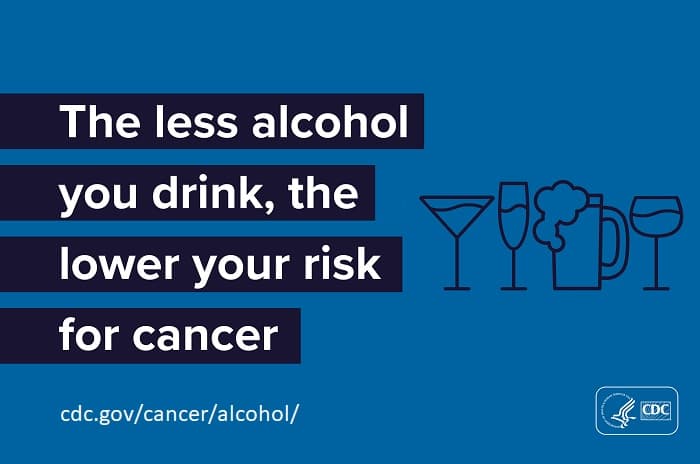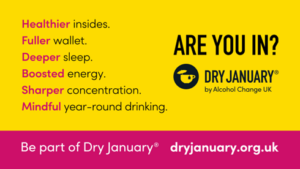“If you don’t drink alcohol, don’t start because of potential
health benefits. However, if you drink a light to moderate
amount and you’re healthy, you can probably continue…”.1
Umbrella
What may the Alcohol Umbrella include?
Depending on the Source (DotS) this Umbrella may include:
- Alcohol
- Booze
- Drug
- Grog
- Liquor
Definition
What is alcohol?
DotS the definition of alcohol may vary. The (United States) Centers for Disease Control and Prevention’s (CDC) definition is:
Good or Not
Is alcohol good for you?
In Nutrition and Healthy Eating: In-Depth – Alcohol: Weighing Risks and Potential Benefit – Deciding About Drinking the (United States) Mayo Clinic explain:
Women and Alcohol
If women choose to drink alcohol, what does moderate drinking mean?
DotS and/or DotC (Depending on the Country) this may vary. For the United States in Alcohol and Public Health: Frequently Asked Questions – Drinking Patterns: What Does Moderate Drinking Mean? the CDC explain:
For the United Kingdom (UK) in UK Low Risk Drinking Guidelines: Weekly Guidelines Drinkaware.co.uk elaborate on:
- To keep health risks from alcohol to a low level it’s safest not to drink more than 14 units a week on a regular basis
- If you regularly drink as much as 14 units per week, it’s best to spread your drinking over three or more days…
- The risk of developing a range of health problems (including cancers of the mouth, throat and breast) increases the more you drink on a regular basis…”.5
Standard Drink
What is a standard drink?
DotS and/or DotC the definition of a standard drink may vary. In the United States according to the (United States) National Institute on Alcohol Abuse and Alcoholism:
- 12 ounces of regular beer, which is usually about 5% alcohol
- 5 ounces of wine, which is typically about 12% alcohol
- 1.5 ounces of distilled spirits, which is about 40% alcohol”.6
Unit of Alcohol
What is a unit of alcohol?
DotS and/or DotC this may vary. In What Is An Alcohol Unit? What Is An Alcohol Unit? the UK according to Drinkaware.co.uk:
High Risk Drinking
What is high risk drinking?
DotS the definition of high risk drinking may vary. In Alcohol: What Is High Risk Drinking? the (Australian) Jean Hailes for Women’s Health’s definition is:
Health Care Provider
What if I would like help to drink less or stop drinking?
If you would like help to drink less or stop drinking, it may be in your best interest to choose to talk to your health care provider about this. The JH note:
Health Topics A-Z
Where may I find Health Topics A-Z related to Alcohol?
In Health Topics A-Z you may find:
Links
Where may I find Links related to Alcohol?
Your Country may have Links similar to:
Links
This Links List to third party websites is neither comprehensive nor exhaustive. Inclusion on this Links List does not imply endorsement or recommendation. Non-inclusion on this Links List does not imply non-endorsement or non-recommendation. Third party websites are not under the control of Meno Martha International Menopause Directory. Third party websites may contain explicit medical images and/or sexual references. Please read Meno Martha International Menopause Directory’s Links Policy before proceeding to a Link. Please contact Webmaster if you experience a problem with a Link.New or Updated
- Alcohol Raises Heart Disease Risk, Particularly Among Women [28 March 2024]
- Alcohol and Menopause: What Are the Risks?
- How Alcohol Affects Your Brain | Akhil Anand, MD [February 2024]
- Mayo Clinic Minute: Why Alcohol and Menopause Can Be A Dangerous Mix [+ Video Courtesy: Mayo Clinic News Network]
- Video Series-2023: Lifestyle Modification and Prevention of Breast Cancer
- What Does Alcohol Do To Your Body? 9 Ways Alcohol Affects Your Health [15 February 2024]
- A.A. Around the World [Alcoholics Anonymous]
- About Alcohol Awareness Week [July, United Kingdom]

- Al-Anon Family Groups
- Alcohol
- Alcohol
- Alcohol Calorie Calculator
- Alcoholic Drinks and Units
- Alcohol Intolerance
- Alcohol Misuse
- Alcohol Raises Heart Disease Risk, Particularly Among Women
- Alcohol Spending Calculator
- Alcohol Support
- Alcohol Support: Alcohol Units
- Alcohol Support: Calories In Alcohol
- Alcohol Support: Tips on Cutting Down
- Alcohol Use Disorder
- Alcohol Use Disorder
- Alcohol Use and Cancer
- Alcohol Use: Weighing Risks and Benefits
- Alcohol and Breast Cancer
- Alcohol and Calories
- Alcohol and Cancer

- Alcohol and Cancer
- Alcohol and Cancer Risk
- Alcohol and Diabetes
- Alcohol and Diabetes
- Alcohol and Fitness
- Alcohol and Heart Disease
- Alcohol and Menopause: A Balancing Act
- Alcohol and Menopause: What Are the Risks? [+ Video]
- Alcohol and Mental Health
- Alcohol and Other Drugs
- Alcohol and Public Health: Frequently Asked Questions
- Alcohol and Sex
- Alcohol and Stress
- Alcohol and Women
- Alcohol and Your Body
- Alcohol and the Liver
- Alcohol-Free Drinks
- Alcoholandcancer.eu [Alcohol and Cancer, Nordic Alcohol and Drug Policy Network (NordAN)]
- Alcoholchange.org.uk [Alcohol Change UK]
- Alcohol’s Health Effects: What You Need To Know
- Are Hangover Cures Urban Myths? Or Do Some Actually Work?
- Are You Addicted To Alcohol?
- Are You Drinking Too Much?
- Blackouts and Your Brain: How To Avoid Memory Loss
- Breast Cancer Prevention: It’s Never Too Late To Make Changes
- Can Coffee Help Cure A Hangover?
- Can I Drink Alcohol If I’m Taking Painkillers?
- Cocktail Content Calculator
- Confronting Alcohol Use Disorder and Misconceptions As A Woman
- Considering A ‘Dry’ January? Hear From A Mayo Clinic Expert [+ Video]
- Consumer Health: Expert Answers – What Are the Effects of Drinking Alcohol While Taking Antibiotics?
- Consumer Health: Grape Juice, Red Wine and Heart Health
- Consumer Health: When Is A Hangover An Emergency?
- Don’t Let A Little Habit Turn Into A Big Problem
- Drink-Refusal Skills: How To Say No To An Alcoholic Drink
- Drinkaware.co.uk [Drinkaware, United Kingdom]
- Drinking Less and the Benefits for Your Body
- Drinkwise.org.au [DrinkWise]
- Dry January

- Excessive Alcohol Use Is A Risk To Women’s Health
- FAQs: Alcohol and Women
- Facts About Alcohol
- Framingham Heart Study
- Hellosundaymorning.org [Hello Sunday Morning]
- How Alcohol Affects Relationships
- How Alcohol Affects Your Appearance
- How Alcohol Affects Your Brain | Akhil Anand, MD
- How Alcohol Affects Your Body
- How Alcohol Affects Your Heart
- How Is Your Drinking Affecting You?
- How Long Does Alcohol Stay In Your System?
- How To Cut Down on Alcohol At Home
- How To Get Things Back on Track After A Slip-Up
- How To Start Drinking Less
- Is A.A. for You? [Alcoholics Anonymous]
- Is Alcohol Affecting Your Sex Life?
- Limit Alcohol Consumption
- Low Alcohol Drinks
- Mayo Clinic Minute: Why Alcohol and Menopause Can Be A Dangerous Mix [+ Video]
- NIAAA Alcohol Treatment Navigator: Find Your Way To Quality Alcohol Treatment [National Institute on Alcohol Abuse and Alcoholism, United States]
- National Institute on Alcohol Abuse and Alcoholism [United States]
- Need Help With A Drinking Problem?
- Nutrition and Healthy Eating: In-Depth – Alcohol: Weighing Risks and Potential Benefits
- Reduce the Amount You and Your Partner Drink
- Rethinkingdrinking.niaaa.nih.gov [Rethinking Drinking]
- Samhsa.gov [Substance Abuse and Mental Health Services Administration]
- Supporting Your Partner or Loved One
- The 6 Best Foods for Hangovers
- The High Cost of Alcohol To Your Health
- The Risks of Drinking Too Much
- Tips for Cutting Down
- Understanding Alcohol Use Disorder
- Unit & Calorie Calculator
- Video Series-2023: Lifestyle Modification and Prevention of Breast Cancer
- What Does Alcohol Do To Your Body? 9 Ways Alcohol Affects Your Health
- What Is An Alcohol Unit?
- Women and Alcohol
- Worried About Someone Else’s Drinking?
Sources
Where may I find the Sources quoted?
You may find the Sources quoted at:
Sources
- Nutrition and Healthy Eating: In-Depth – Alcohol: Weighing Risks and Potential Benefit – Deciding About Drinking. 11 December 2021. Mayo Clinic https://www.mayoclinic.org/healthy-lifestyle/nutrition-and-healthy-eating/in-depth/alcohol/art-20044551 Accessed: 24 December 2023
- Alcohol and Public Health: Frequently Asked Questions – About Alcohol: What Is Alcohol? Page Last Reviewed: 19 April 2022. Centers for Disease Control and Prevention https://www.cdc.gov/alcohol/faqs.htm#top Accessed: 24 December 2023
- Nutrition and Healthy Eating: In-Depth – Alcohol: Weighing Risks and Potential Benefit – Deciding About Drinking. 11 December 2021. Mayo Clinic https://www.mayoclinic.org/healthy-lifestyle/nutrition-and-healthy-eating/in-depth/alcohol/art-20044551 Accessed: 24 December 2023
- Alcohol and Public Health: Frequently Asked Questions – Drinking Patterns: What Does Moderate Drinking Mean? Page Last Reviewed: 19 April 2022. Centers for Disease Control and Prevention https://www.cdc.gov/alcohol/faqs.htm#top Accessed: 24 December 2023
- UK Low Risk Drinking Guidelines: Weekly Guidelines. Last Reviewed: 30 June 2022. Drinkaware.co.uk https://www.drinkaware.co.uk/facts/alcoholic-drinks-and-units/low-risk-drinking-guidelines Accessed: 24 December 2023
- What Is A Standard Drink? National Institute on Alcohol Abuse and Alcoholism https://www.niaaa.nih.gov/alcohol-health/overview-alcohol-consumption/what-standard-drink Accessed: 24 December 2023
- What Is An Alcohol Unit? What Is An Alcohol Unit? Last Reviewed: 08 March 2023. Drinkaware.co.uk https://www.drinkaware.co.uk/alcohol-facts/alcoholic-drinks-units/what-is-an-alcohol-unit/ Accessed: 24 December 2023
- Alcohol: What Is High Risk Drinking? Last Updated: 12 February 2024 | Last Reviewed: 23 January 2024. Jean Hailes https://www.jeanhailes.org.au/health-a-z/healthy-living/alcohol#what-is-high-risk-drinking Accessed: 17 March 2024
- Alcohol: Where To Get Help. Last Updated: 12 February 2024 | Last Reviewed: 23 January 2024. Jean Hailes https://jeanhailes.org.au/health-a-z/healthy-living/alcohol Accessed: 17 March 2024



